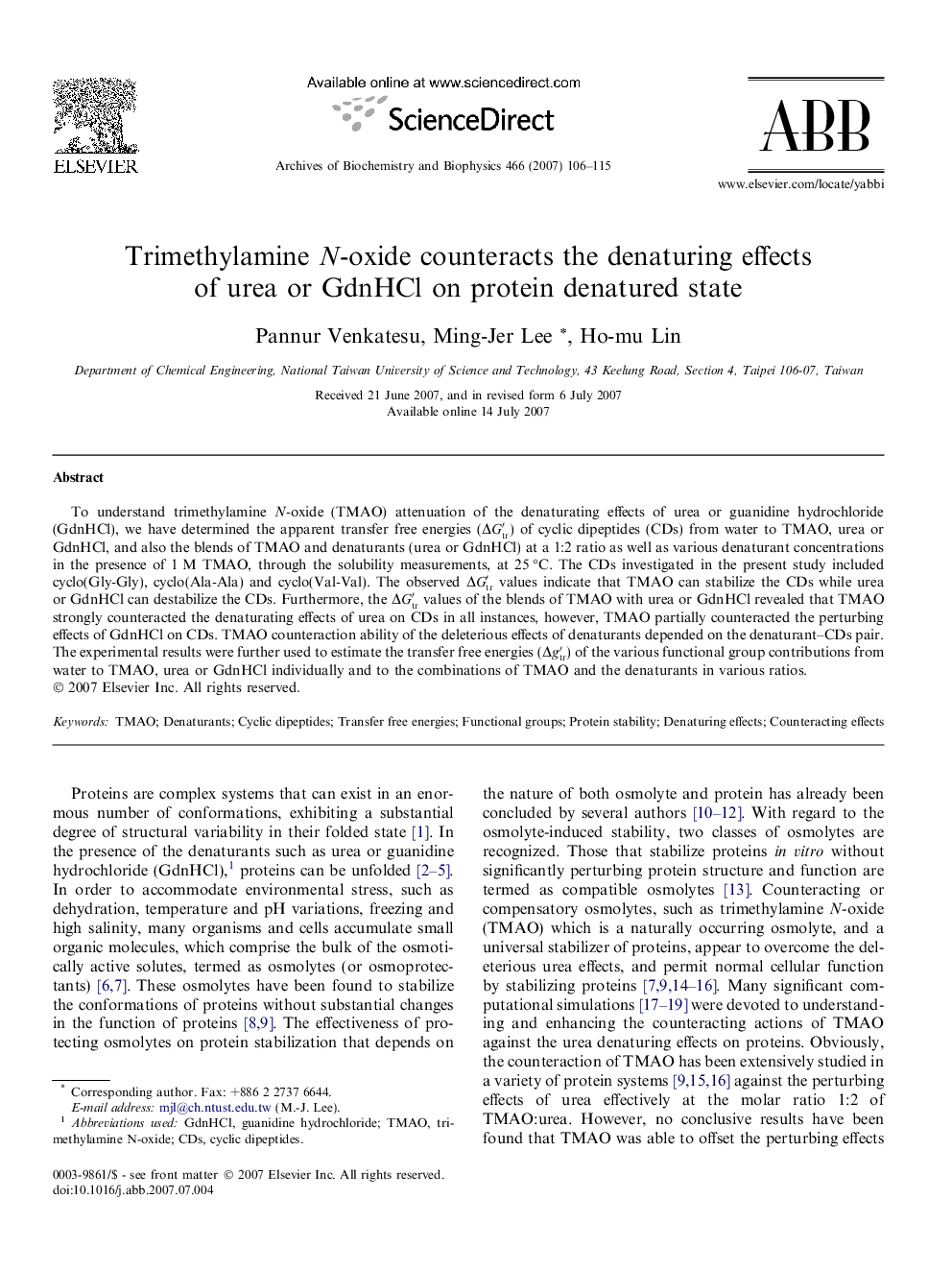| Article ID | Journal | Published Year | Pages | File Type |
|---|---|---|---|---|
| 1927026 | Archives of Biochemistry and Biophysics | 2007 | 10 Pages |
To understand trimethylamine N -oxide (TMAO) attenuation of the denaturating effects of urea or guanidine hydrochloride (GdnHCl), we have determined the apparent transfer free energies (ΔGtr′) of cyclic dipeptides (CDs) from water to TMAO, urea or GdnHCl, and also the blends of TMAO and denaturants (urea or GdnHCl) at a 1:2 ratio as well as various denaturant concentrations in the presence of 1 M TMAO, through the solubility measurements, at 25 °C. The CDs investigated in the present study included cyclo(Gly-Gly), cyclo(Ala-Ala) and cyclo(Val-Val). The observed ΔGtr′ values indicate that TMAO can stabilize the CDs while urea or GdnHCl can destabilize the CDs. Furthermore, the ΔGtr′ values of the blends of TMAO with urea or GdnHCl revealed that TMAO strongly counteracted the denaturating effects of urea on CDs in all instances, however, TMAO partially counteracted the perturbing effects of GdnHCl on CDs. TMAO counteraction ability of the deleterious effects of denaturants depended on the denaturant–CDs pair. The experimental results were further used to estimate the transfer free energies (Δgtr′) of the various functional group contributions from water to TMAO, urea or GdnHCl individually and to the combinations of TMAO and the denaturants in various ratios.
